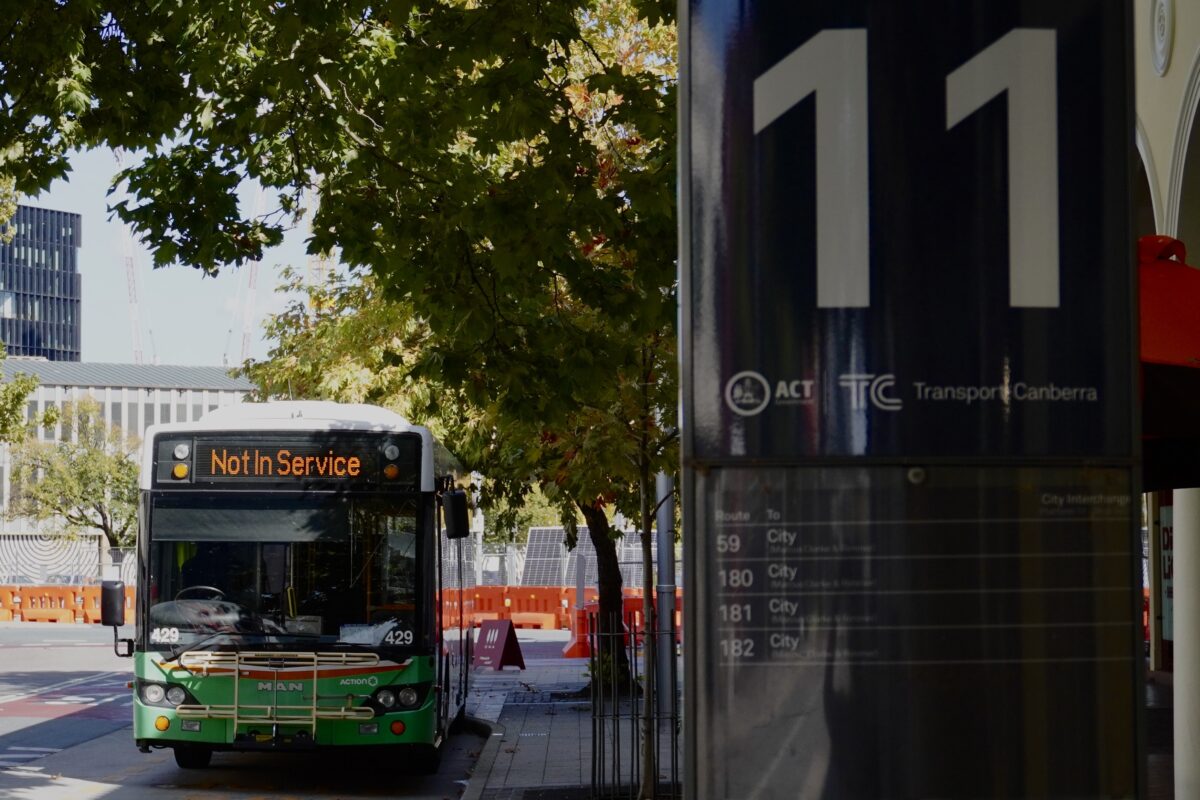Call me a radical leftist, but I believe ANU students deserve the right to accessible and convenient public transport, especially the thousands of students who live across Daley Road. In 2019, Transport Canberra (TC) decided to stop the 3 bus, which connected Daley Road to City and Belconnen.
This was part of a greater change to the TC bus network, with the route cut justified by the Minister for Transport, Chris Steel, due to it being “very poorly patronised.”
ANU Security’s night bus and shuttle bus both also ceased running services in the last couple of years. This has left thousands on Daley Road in a ‘black zone’ for public transport.
In a further assault to campus connectivity, ANU announced a price hike last year for on-campus parking for students, increasing rates by 510 per cent. ANU had previously mentioned that the parking increases support its “commitment to broader sustainability goals” such as ”promoting alternative transportation modes.”
Legislative Assembly member, Thomas Emerson, has advocated for a Daley Road bus in the ACT Legislative Assembly, and told Woroni, “I’m supportive of reducing car dependency in our city but sticks need to be accompanied by carrots. The way we get people out of cars is through ambitious investment in attractive public and active transport options.”
He continued, “Transport poverty is a growing concern. If we don’t ensure students have access to reliable, affordable, efficient forms of transportation, what will be the impact on the diversity of ANU’s student body?”
Late last year, perhaps to sweeten the announcement of the increase to parking costs, the ANU announced that a bus service would be in the works for 2025, with “two electric buses to solely serve the ANU campus from the city main bus interchange.”
However just days later, the ANU changed its wording, seemingly pulling away from their previous announcement. The new announcement removed the details and the estimate of when the service would be functional.
Email correspondence sent on 2 October 2024 between an ANU student and a TC staff member stated that, “Transport Canberra are not undertaking a Feasibility Study or investigating the provision of two electric buses to service the ANU from the City Interchange”.
The TC staff member continued, “ANU road network infrastructure does not provide a compliant or safe environment for the standard sized TC buses to operate.”
Emerson said that he found it “disappointing to see that ANU may have misrepresented the status of potential bus routes servicing its campus in an attempt to dampen pushback on its massive parking cost hikes.”
Documents attained through a Freedom of Information request revealed communications between the ANU and TC regarding a Daley Road bus, with the ANU Chief Communications Officer, Steven Fanner, admitting that a bus service was a “recurring issue for our student population”.
The emails also showed Jeremy Matthew, Director of the ANU’s Facilities and Services Division, acknowledging that the ANU was “in desperate need of providing solid public transport options for our large community.”
The plan roughly included two electric buses that were “slightly smaller” than regular TC buses, similar to the Ginninderry shuttle, that would, “navigate through Garran road, onto ward then onto Daley Road, then onto North Road and then Barry Drive”, and eventually link to the city interchange.
ANUSA’s Response
ANUSA Welfare officer Kiera Rosenberg told Woroni that her and President Will Burfoot had met with Transport Minister Steel to discuss “transport issues students are facing.” She mentioned the logistical struggles of having a Daley Road bus, including the road size, bus logistics, and the questions of whether it “would have sustainable ridership.”
As Daley Road is deemed difficult for bus drivers to navigate, Rosenberg proposed a potential solution by “circumventing that area around the Daley Road precinct and law buildings altogether and perhaps have a bus route which drops people near the RSSS.”
Rosenberg also highlighted the importance of providing students on campus with access to public transport, given the challenges associated with having to “walk through dark, poorly lit areas before they actually get to the main areas of campus” along with broader “accessibility issues.”
However, as the RSSS building is over 600 metres away from Daley Road, her proposed solution may present significant challenges. The road in front of RSSS, Ellery Crescent, also ends with a tight roundabout, potentially also offering challenges for the physical fit of a TC bus.
The ANUSA Welfare officer also told Woroni, “There was discussion towards the end of last year around the potential for the bus to return; however, there has been no indications that the ANU is actively engaging on this front.”
Conversely, a spokesperson for the ANU has told Woroni that the university is in “ongoing discussions” with TC and the ACT Government regarding a new bus service, including “a meeting scheduled for next month.” As seen in the FOI disclosure, ANU’s announcement of a bus service to hopefully start this year, was only removed at the request of TC themselves.
It remains unclear whether ANU students will be getting a bus anytime soon. One can only hope that ANU and TC are able to work collaboratively to put students first, and ensure that a Daley Road bus can break through this bureaucracy.
We acknowledge the Ngunnawal and Ngambri people, who are the Traditional Custodians of the land on which Woroni, Woroni Radio and Woroni TV are created, edited, published, printed and distributed. We pay our respects to Elders past and present. We acknowledge that the name Woroni was taken from the Wadi Wadi Nation without permission, and we are striving to do better for future reconciliation.
